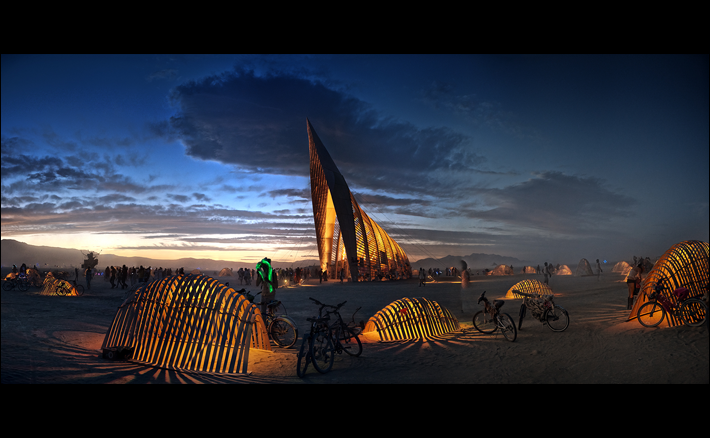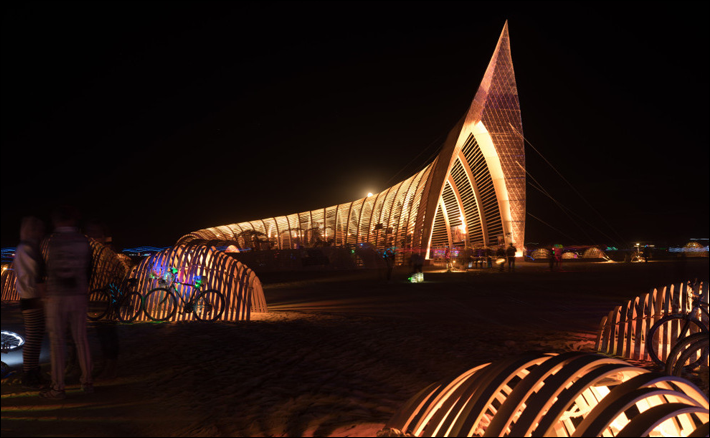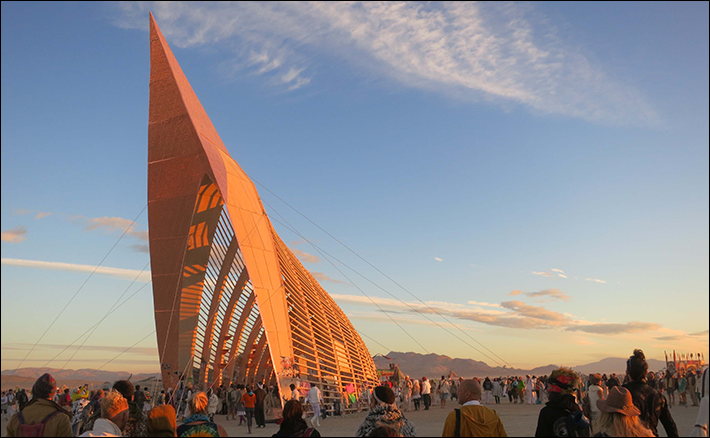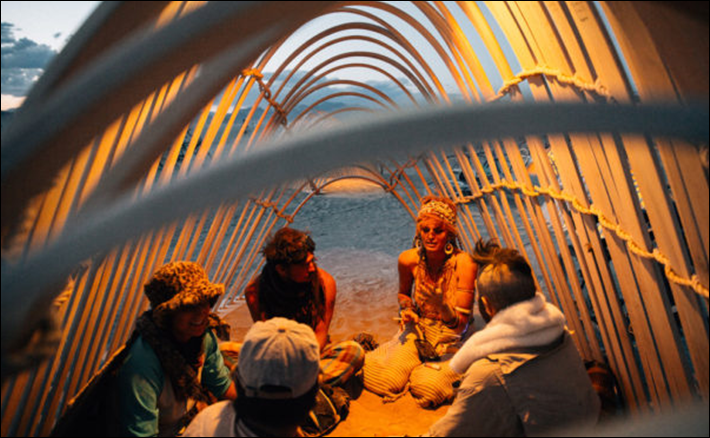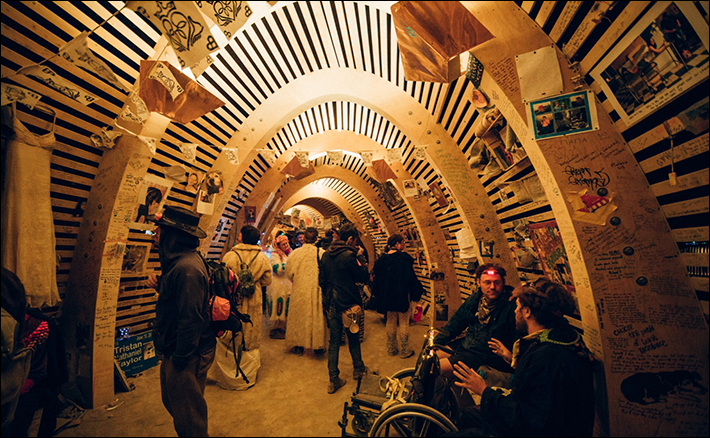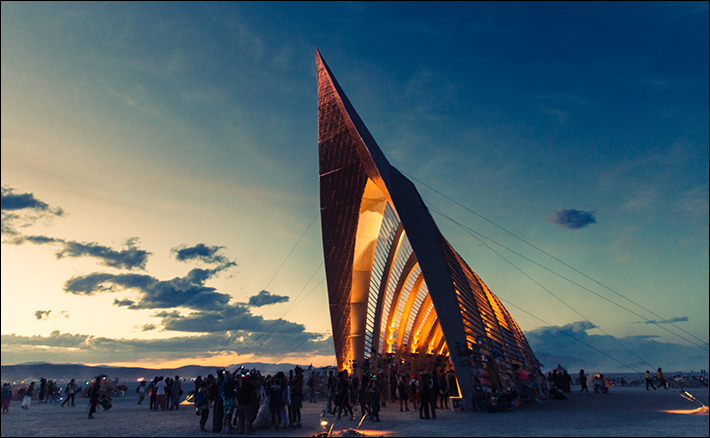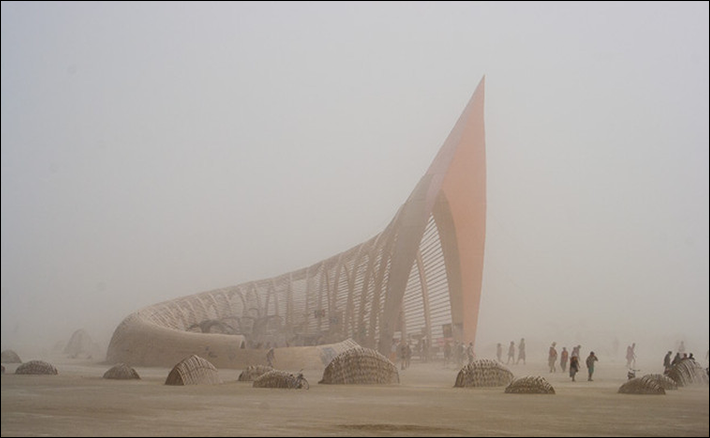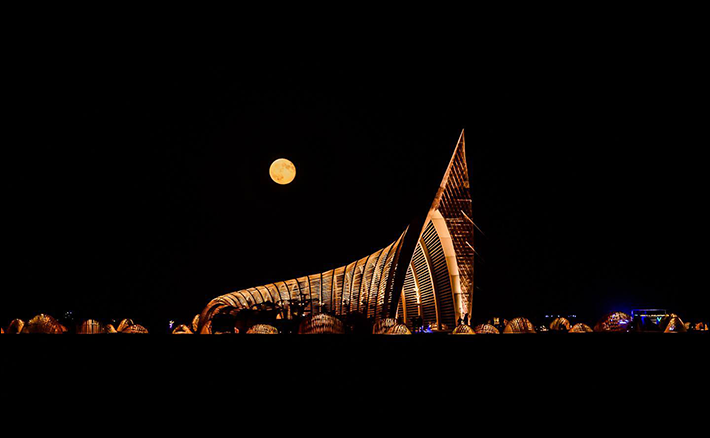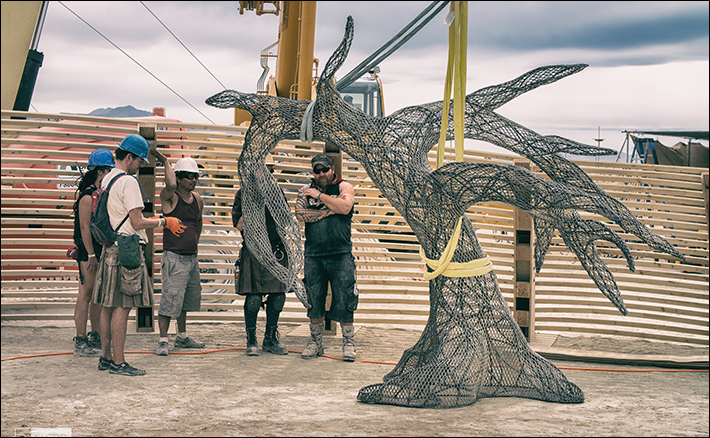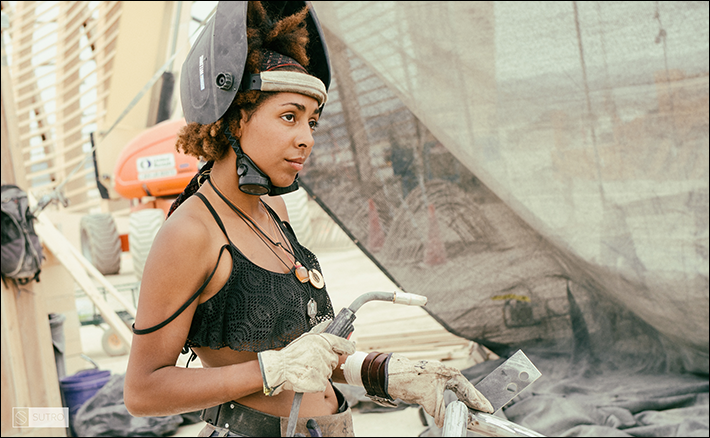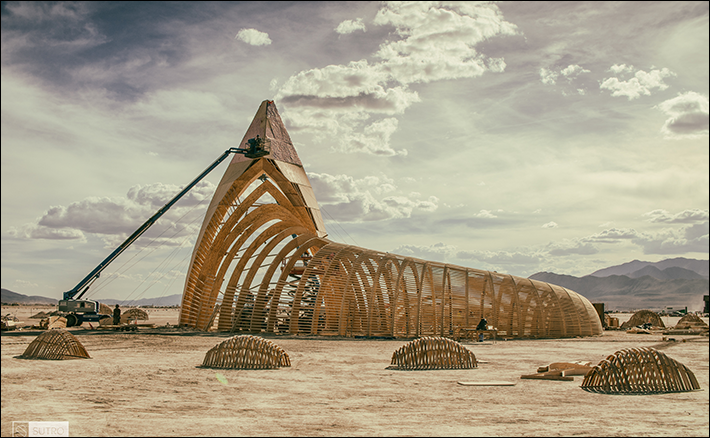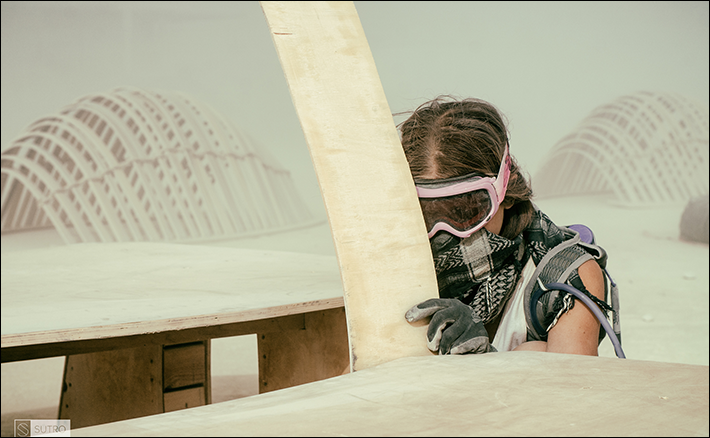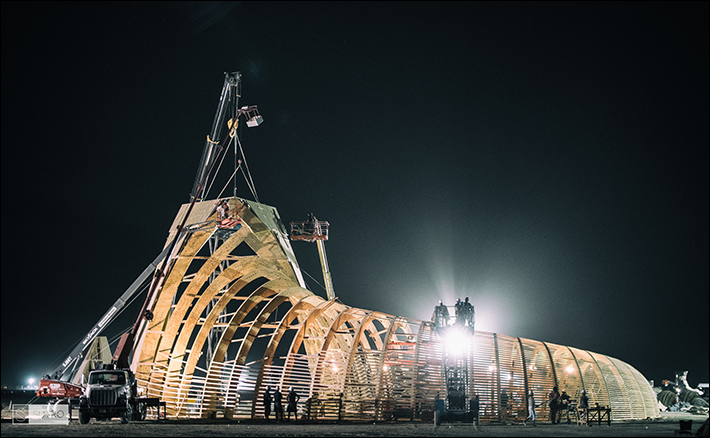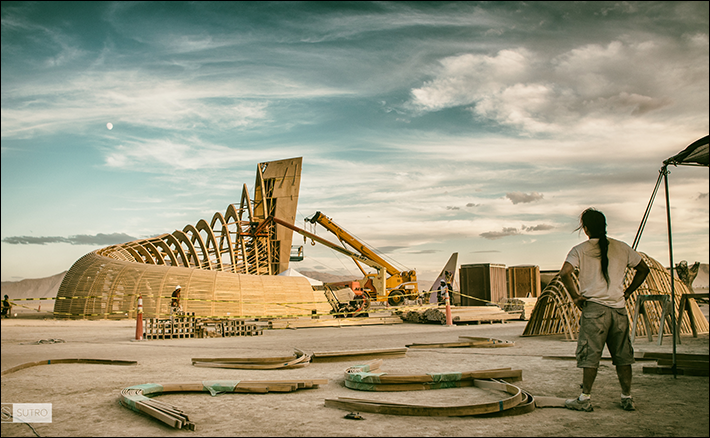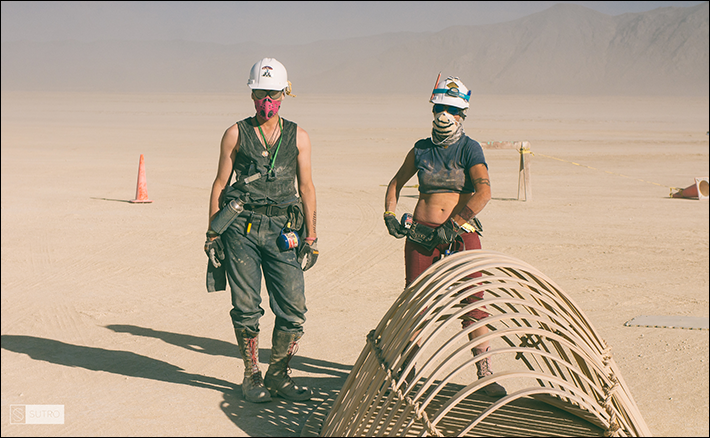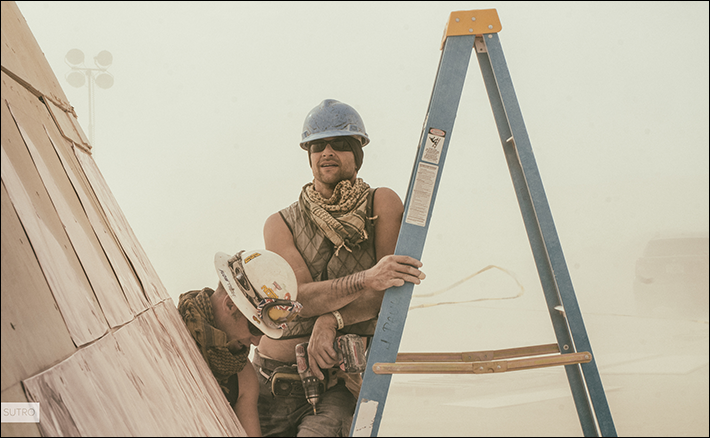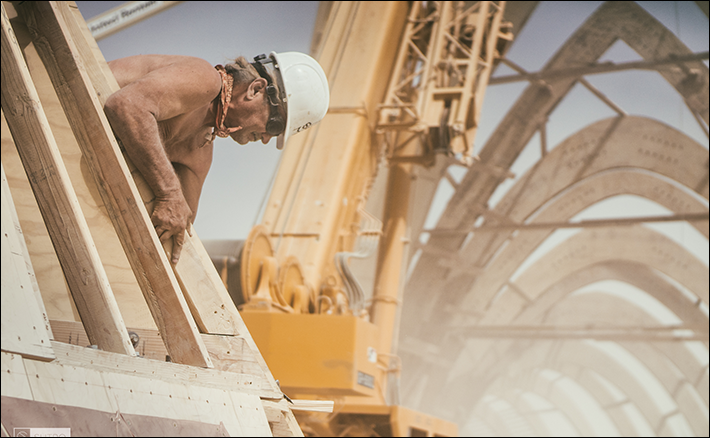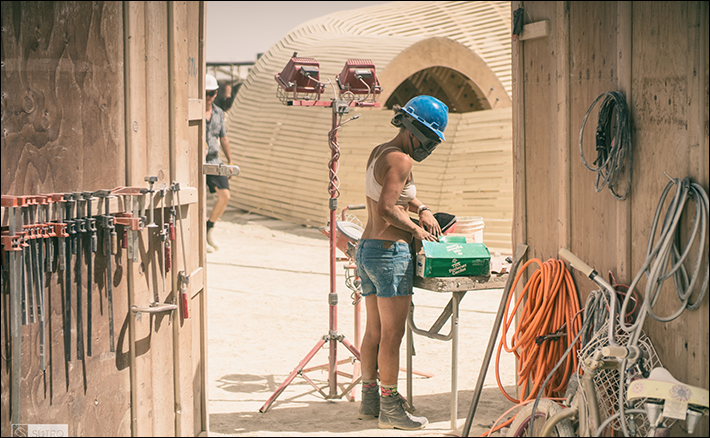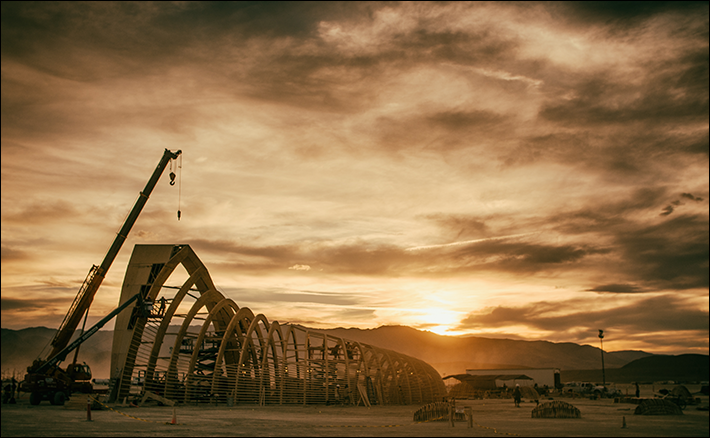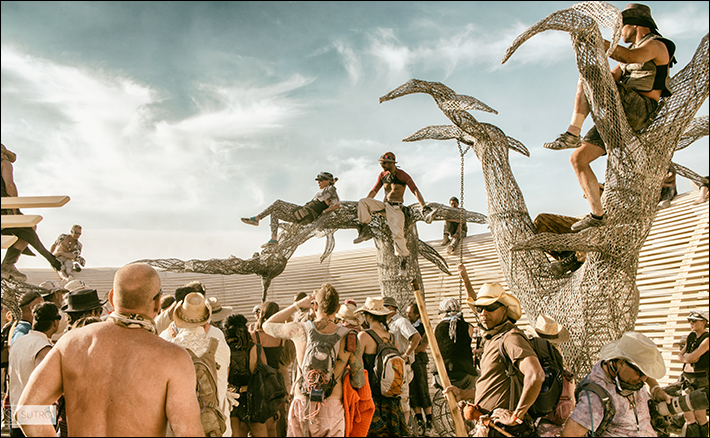Temple of Promise
To date, this has been the largest project of my life and it taught me more about how to get stuff done than anything else ever has. It was an adventure and the most daunting challenge I’ve ever undertaken. I discuss the design in greater depth in my coverage of the architectural model. The project itself meant assembling and leading an all volunteer crew to manage the construction, engineering, logistics, fundraising, transportation, construction, burn, and clean up for the project. The Temple is the spiritual center of Burning Man and it was a tremendous privilege to be a part of such a beautiful tradition. Near the beginning of the project, I was asked to make a presentation at Burning Man’s Desert Arts Preview event at Fort Mason, San Francisco. The transcript follows:
And Some of the Words are Theirs…
Among sacred spaces, the Temple at Burning Man is unique or very nearly so. It’s singular nature derives from a confluence of elements – that it is secular, that it is ephemeral, that it is a gift both to and from the community.
Its secularity is no small thing. Beholden to no religious purpose, this Temple is free to serve any and all of the needs that people bring to it. Because it doesn’t have to make you believe something or worship something there is a conversation to be had in this place that is unavailable elsewhere.
In designing the Temple, you soon discover that people address their needs more directly here and this is reflected in the rituals that have evolved over the years. The central questions driving every decision you make are “who are these people?” and “what do that need?”.
The guiding philosophy behind this design is rooted in a story. I was living in New York City – in Brooklyn – when the twin towers fell and in the aftermath I spent a great deal of time at a vigil in Union Square. The vigil came about spontaneously and lasted several weeks until the city cleared it out. It was beautiful; it was heartbreaking. There is a long version of this story but the short version is that one day I come across a wall plastered with flyers. They are missing persons posters, placed by the families and loved ones of victims. But unlike the usual posters, there is no abduction behind them, no mystery – we all knew exactly what had happened.
On the face of it, these posters are so obviously a futile act. A thing done in service to desperation, to a belief that maybe – just maybe – fate loves your person as much as you do and has granted a miracle. Maybe she’s wandering through the city dazed, maybe she’s suffering amnesia and maybe this poster can bring her home. And this fantasy is so much better than the alternative and at the very least you must try…
On each poster you find the identifying details you expect – height, and weight, and hair color, and eye color, and what they were last seen wearing. And if you see this person, please, please call this number.
But if you read on, there are other details too: here, a father of a six year old and an eight year old (he coaches their soccer team on weekends); here, a daughter who loves travel and she’s been planning a trip to south america for months; here, a cousin who has dreamed of being a firefighter since he was 5 and given a toy engine.
For each poster, someone has combed through a collection of photographs to select just the right one. And then, someone sat down to chose the words. Personalizing words, eulogizing words.
For each poster there is a family that knows the truth yet feels a duty to their denial, a duty to keep hope for longer than the rest of us. And so someone makes a poster, makes a hundred copies, or a thousand and then walks through the city until walls like this one can be found everywhere. So many families, so many different people responding in the same way. And as much as these posters are meant to bring a loved one home, they are also ritual.
Standing there, staring at a wall of faces – dead faces – I came to understand it all very differently.
Of course, none of these people came home. Today, you can find their names on a memorial at ground zero. They are carved in granite parapets surrounding waterfalls that occupy the footprints of the World Trade Center. And in my mind, everything about that is wrong. Because that memorial is all about how they died. The wall of missing posters speaks of how they lived. Who they were; that they were.
So I can draw a straight line from that wall to a Temple in the desert with its own rituals. Where people bring remembrances and personal altars they have made with their hands and where they write messages on the structure itself, what would be graffiti in any other sacred space here becomes the heart and soul of the place.
A mother will come to the Temple with a letter to her son, lost to suicide;
A daughter will scrawl her last farewell to a father who died of Alzheimer’s disease;
A man will come seeking forgiveness and redemption for unspeakable abuses;
A woman will come seeking to forgive and hoping leave behind the trap of the past;
A husband will say goodbye to his marriage, accept that it is over, and give finality to its end;
People will grieve. They will celebrate also.
A woman will write about overcoming her struggle with addiction. And a man who would find her words insipid elsewhere will find strength in them here and set out on his own path to conquer his own demons;
People will marry – Lovers will take vows and make promises to each other;
Others will find resolve and make promises to themselves.
The words on the walls are so very public, but in their collective anonymity something special happens. You find shocking candor. Because people are writing as often to the dead as the living, because fire will take their words, they write simply and plainly. More than one person will write just this: Fuck Cancer. There is little poetry there but it will move some among us to tears.
What is this place that can do this? The Temple? the Temple is a book. It is a book with thousands of authors, written by countless hands. It is a book that no one can read in its entirety before it is gone. But you needn’t read far to see the truth that lives there. This book that we write together – it is raw, it is honest, it is real.
And then. And then all of the words are gathered and consigned to flame, rendered ash, and given their proper release.
As builders of the Temple we carry the privilege and responsibility to make empty pages worthy of what people will bring to them. But what they bring is too great and so this is an impossible task and we will fail. But perhaps too, we will succeed a little and that will be enough.
~ Jazz Tigan, 2015
The title of this essay is taken from the final paragraph of Norman Maclean’s novella, A River Runs Through It.
The burn.

